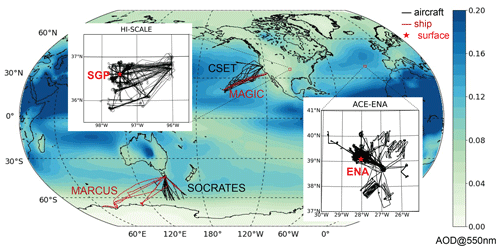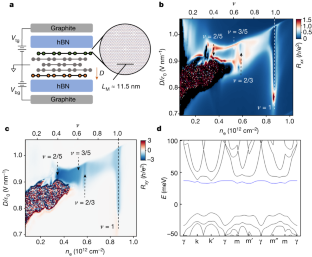2024-02-22 パシフィック・ノースウェスト国立研究所(PNNL)
<関連情報>
- https://www.pnnl.gov/publications/diagnostics-package-evaluate-earth-system-model-aerosol-cloud-interactions-field
- https://gmd.copernicus.org/articles/16/6355/2023/
地球システムモデル・エアロゾル-雲診断(ESMAC Diags)パッケージ、バージョン2:フィールドキャンペーンと長期観測によるエアロゾル、雲、エアロゾル-雲相互作用の評価 Earth System Model Aerosol–Cloud Diagnostics (ESMAC Diags) package, version 2: assessing aerosols, clouds, and aerosol–cloud interactions via field campaign and long-term observations
Shuaiqi Tang, Adam C. Varble, Jerome D. Fast, Kai Zhang, Peng Wu, Xiquan Dong, Fan Mei, Mikhail Pekour, Joseph C. Hardin, and Po-Lun Ma
Geoscientific Model Development Published: 08 Nov 2023
DOI:https://doi.org/10.5194/gmd-16-6355-2023

Abstract
Poor representations of aerosols, clouds, and aerosol–cloud interactions (ACIs) in Earth system models (ESMs) have long been the largest uncertainties in predicting global climate change. Huge efforts have been made to improve the representation of these processes in ESMs, and the key to these efforts is the evaluation of ESM simulations with observations. Most well-established ESM diagnostics packages focus on the climatological features; however, they lack process-level understanding and representations of aerosols, clouds, and ACIs. In this study, we developed the Earth System Model Aerosol–Cloud Diagnostics (ESMAC Diags) package to facilitate the routine evaluation of aerosols, clouds, and ACIs simulated the Energy Exascale Earth System Model (E3SM) from the US Department of Energy (DOE). This paper documents its version 2 functionality (ESMAC Diags v2), which has substantial updates compared with version 1 (Tang et al., 2022a). The simulated aerosol and cloud properties have been extensively compared with in situ and remote-sensing measurements from aircraft, ship, surface, and satellite platforms in ESMAC Diags v2. It currently includes six field campaigns and two permanent sites covering four geographical regions: the eastern North Atlantic, the central US, the northeastern Pacific, and the Southern Ocean. These regions produce frequent liquid- or mixed-phase clouds, with extensive measurements available from the DOE Atmospheric Radiation Measurement user facility and other agencies. ESMAC Diags v2 generates various types of single-variable and multivariable diagnostics, including percentiles, histograms, joint histograms, and heatmaps, to evaluate the model representation of aerosols, clouds, and ACIs. Select examples highlighting the capabilities of ESMAC Diags are shown using E3SM version 2 (E3SMv2). In general, E3SMv2 can reasonably reproduce many observed aerosol and cloud properties, with biases in some variables such as aerosol particle and cloud droplet sizes and number concentrations. The coupling of aerosol and cloud number concentrations may be too strong in E3SMv2, possibly indicating a bias in processes that control aerosol activation. Furthermore, the liquid water path response to a perturbed cloud droplet number concentration behaves differently in E3SMv2 and observations, which warrants further study to improve the cloud microphysics parameterizations in E3SMv2.



